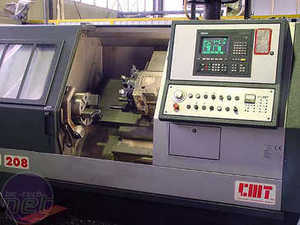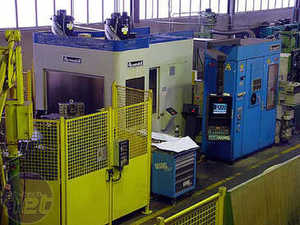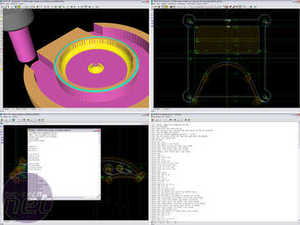Foreword
Since long before G69T's Dark Blade won the 2006 Mod of the Year here on our site, it has attracted loads of attention. The precision, amazing design and out-and-out tremendous execution puts it leagues above all but the best of mods. In fact, it's safe to say that Dark Blade is probably one of the greatest of the great.So why has it taken almost another year to get it onto our front page?
Well, for those of you who haven't tried to navigate the hundreds upon hundreds of forum posts in his project log, I'll tell you - Gianluca doesn't really speak English, and a mod of this calibre can't just be stripped down to a five page article or a ghost writing. And if you try taking many of these terms through Google Translator, well...it's an interesting read to say the least.
Fortunately, I speak quite a bit of Italian and he does speak a small amount of English. And so, between the two of us we have managed to sort through thousands of images, hundreds of steps, and are finally ready to bring you the only English log of Dark Blade. The case was created in two stages, and today we bring you the first - the Water Station.
And so, without further ado, I'm going to turn this over to Gianluca (through my translation). If something doesn't make perfect sense, please ask in the forums and we'll be happy to try and answer you as best we can.
In the beginning...
Hello! I am Gianluca, also known as G69T on the bit-tech.net forums, and I am the creator of Dark Blade. Since it's been asked before, my nickname comes from my first and last initials and my year of birth - 1969. Yes, it's true that I'm an "old" modder, but this demonstrates that even a husband and the father of a splendid child can lose hours and nights planning and then creating an ambitious mod.Dark Blade was started in the autumn of 2004, though construction wasn't finished until the end of 2006. Initially, the case mod was going to be a simple evolution of one of my previous mods, the "G69T Classic." All I had wanted to do was add a new module (Water Station) positioned under the previous system.
Since the water station would be the base of (and thus outline the whole shape for) what would become Dark Blade, and hold my previous G69T Classic and its evolution, it had to be the same size as the old case. Therefore, everything was designed to 350x350mm. Of course, by the end of the project, that was the only thing in common between my "old" mod and the new Dark Blade.
I originally became interested in modding during 2003, when I was unable to find a case that fit all of the characteristics that I wanted. I was looking for a case that was solid and well-structured, that would be silent, dampen vibrations and help to dissipate the heat of components. It didn't have to be an artistic masterwork - it just had to be built right.
Fortunately, my job allowed me the perfect medium for my creations - solid aluminium. I am the manager for the CNC lathes and mills at our family production business here in Italy, where I handle the calibration and programming of five separate machines. I began by creating an experimental design I dubbed "G69T Visual," a case that was very different from its successors.
In March of 2004, G69T Classic was presented at CeBIT in Hanover at the ATI stand. After that great opportunity, I decided to pursue a more artistic approach to modding, as opposed to the simple design of my Classic mod. This would put my CNC design skills to the test, and by September of 2004 the panels of G69T Classic were redone with a spider theme, winning another modding contest in Milan.


Left - G69T Classic (and its predecessor, Visual) was featured at CeBIT 2004;
Right - The remodelled panels on Classic won a national modding contest in Milan.
And so, we reach the point where I began to create the successor to G69T Classic - Dark Blade. In this article, we will look at the first part of its construction, the Water Station. Remember, the case was designed in two very separate parts - the Water Station would initially be made to be an addition to G69T Classic, which had already been improved once before.
Planning
Many would think that a mod like Dark Blade must be planned with an overall concept in mind, and many sketches or 3D renders - but that was not the case! Instead, each piece was designed as I thought of it directly in the CAD-CAM software that controlled the CNC lathes. There is not even a single piece of paper with an overall picture.What I did use paper for was a model - I would think about designs day in and day out, often folding pieces up into 3D representations and turning them over in my hands. This would help me visualise each component of Dark Blade. After I had thought of each piece, its technical implications and its aesthetics, I would put it into the CAD-CAM software to be milled.
The software allowed me to really visualise how my creations would fit together. I could design the piece in 2D to my exact sizes, and then bring it to 3D - this gave me an advantage over usual 3D design programs. Once each piece was laid out I could rotate it freely and even see how the machine would mill it, adding design and aesthetic elements as I went along.

MSI MPG Velox 100R Chassis Review
October 14 2021 | 15:04













Want to comment? Please log in.